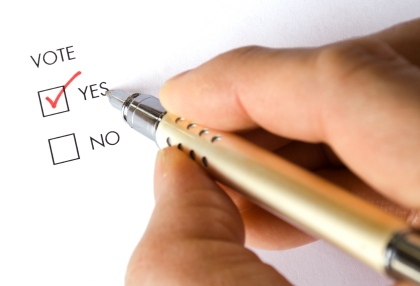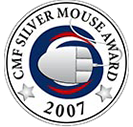Please select your language
| Human Trafficking in the United States |
|
Overview of Domestic Human Trafficking Human trafficking is a form of modern-day slavery, one which plagues every country. As a senior member of the Commission on Security and Cooperation in Europe (CSCE), I am well aware of the scope of this tragedy. Many are surprised to find slavery in the United States because it is commonly believed that human trafficking happens only in developing countries. However, the United States is one of the world’s chief destinations for human trafficking. First, I would like to convey that there are ways for you to help put an end to the unrelenting pain, brutality, and despair that victims of human trafficking suffer daily. Victims are often tricked into accepting a job offer that promises them a better life. Instead, they find themselves subjected to force, fraud or coercion for the purpose of sexual exploitation or forced labor. These victims are young children, teenagers, men and women, trapped in a cycle of physical and psychological abuse. Every year as many as 17,500 people are trafficked to the United States from over 50 countries worldwide, of which 80 percent are female and 50 percent are children. The United States has identified Thailand, Mexico, Philippines, Haiti, India, Guatemala and the Dominican Republic as the main countries of origin for domestic human trafficking. Over 300,000 children are trafficked annually into urban centers such as Washington D.C., New York, and Los Angeles. Centers of tourism, including Las Vegas and Florida, are also major destinations for human trafficking victims. On June 15, 2010, I hosted a ceremony to honor nine individuals whose contributions were notably mentioned in the U.S. Department of State’s 2010 Trafficking in Persons Report. The event acknowledged international activists from Mauritania, Uzbekistan, Jordan, Mongolia, India, Burundi, Hungary, Brazil and the United States, as 2010 heroes in the fight against modern slavery. More so than anything, each of these people show that one person can make a difference in reducing human trafficking around the world. Throughout my tenure in Congress, I have supported legislation that will help in the effort to combat human trafficking both domestically and abroad. In the 111th Congress, I co-sponsored two House Resolutions, H. Res. 1379, Expressing the Sense of Congress with Respect to Domestic Sex Trafficking of Minors and H. Res 1412, Congratulating the Government of South Africa upon its First Two Successful Convictions for Human Trafficking. I will also continue these efforts in the 112th Congress, because I firmly believe that the fight against human trafficking requires an unrelenting approach. The American children and women who are trafficked come from big cities and small towns. They come from affluent, middle class, and lower-income families and from many ethnic backgrounds. They are recruited from malls, schools, youth centers, beauty salons, and online. Human trafficking is a health, security, and moral issue, which erodes both our political systems and communities. Hidden in Plain Sight: How You Can Help Victims of Human Trafficking Human trafficking could be taking place right next door to you. Since it thrives on secrecy, the more you know, the more you can do to prevent it. We have a responsibility to protect our neighbors, our communities, and our fellow humans. Please join me in the fight to finally end slavery. One phone call could save a life. Therefore, it is helpful to know the signs of human trafficking. A combination of the following indicators may be signs of suspicious activity and possible human trafficking: A trafficked person may:
If you suspect human trafficking, please call the National Human Trafficking Resource Center (NHTRC) hotline at 1-888-373-7888. The NHTRC Hotline is a 24-hour, 7 day a week, toll-free hotline. NHTRC Call Specialists can connect victims with law enforcement and social service providers in their local area who can help them get out of exploitative situations and into safe environments where they have access to services, such as emotional support, health care, and legal services. In addition to being aware of suspicious activity, you can help end this tragedy by becoming active in your community and talking to your children about the dangers of human trafficking. To become active in your community, you can:
Current Initiatives to End Human Trafficking The United States government is a leader in the global fight against human trafficking. The United States Commission on Security and Cooperation in Europe (CSCE) is working on legislative measures to monitor the international travel of sex offenders to prevent sexual exploitation abroad, as well as measures to combat the proliferation of child pornography. Additionally, CSCE has promoted co-operative assistance agreements between the United States and other foreign governments to target individuals who are profiting from the trafficking of children. Congress has also passed many pieces of legislation recognizing the significance of this issue, mandating stronger protection for victims, harsher prosecution for criminals and other measures to prevent human trafficking. For example, in 2007 the House of Representatives passed H.R. 3887, the William Wilberforce Trafficking Victims Protection Reauthorization Act. Also, in 2007 Congress passed into law H.R. 3432, establishing the Commission on the Abolition of the Transatlantic Slave Trade Act, which not only reminds the United States of its historic slavery, but also raises awareness about modern slavery. Federal agencies have also been active on this issue. The U.S. Department of Justice (DOJ) has prosecuted 114 cases of human trafficking since 2000. The U.S. Department of Health and Human Services (HHS) assists victims of trafficking in the United States by funding service programs and public information campaigns. The U.S. Department of Labor (DOL) funds anti-trafficking programs overseas and works to identify abusive labor practices in the United States. The U.S. Department of Homeland Security has issued over 1500 T-Visas to identify victims of trafficking. The U.S. Department of State (DOS), through its Office to Monitor and Combat Trafficking, reports the global trafficking situation in its annual Trafficking in Persons Report, and the 2010 report acknowledged for the first time that human trafficking is an issue within the United States, as well as abroad. Government agencies are not the only organizations fighting human trafficking. Non-profit organizations (NGOs) play an important role in reducing human trafficking by activating within the community, advocating for better laws, developing awareness, raising campaigns, rescuing and restoring victims of human trafficking, providing direct assistance to victims (food, shelter, medical care, legal aid, etc.), and conducting research on all aspects of human trafficking. You can help combat this evil by getting involved with one of the many non-profit organizations working to stop human trafficking. I am happy to say that, with the help of the U.S. Immigration and Customs Enforcement (ICE), South Florida law enforcement is ramping up its investigations of human trafficking offenders. ICE has conducted extensive investigations in South Florida resulting in successful arrests and rescues by local law enforcement units. Nine victims were freed from abuse in Miami, Florida, after ICE and the Miami Dade Police Department dismantled a network of brothels. In addition, six children were rescued in Tampa after being subjected to prostitution by their captors when they were as young as twelve years old. The list of successes does not end there. Law enforcement officials find new leads, make new arrests, and save more innocent lives every day. The fight continues, however, and you can be part of the solution. Local organizations, such as the Florida Coalition Against Human Trafficking, aim to find and eradicate human trafficking offenders in our community, the 23rd Congressional district of Florida. These organizations look for the warning signs and report any activity possibly related to human trafficking to the authorities, and they could always use new eyes and ears to aid them in their courageous efforts. Links and Additional Resources The Commission on the Security and Cooperation in Europe: http://csce.gov/ The National Human Trafficking Resource Center: http://www.polarisproject.org/what-we-do/national-human-trafficking-hotline The Florida Coalition Against Human Trafficking: www.stophumantrafficking.org |


























